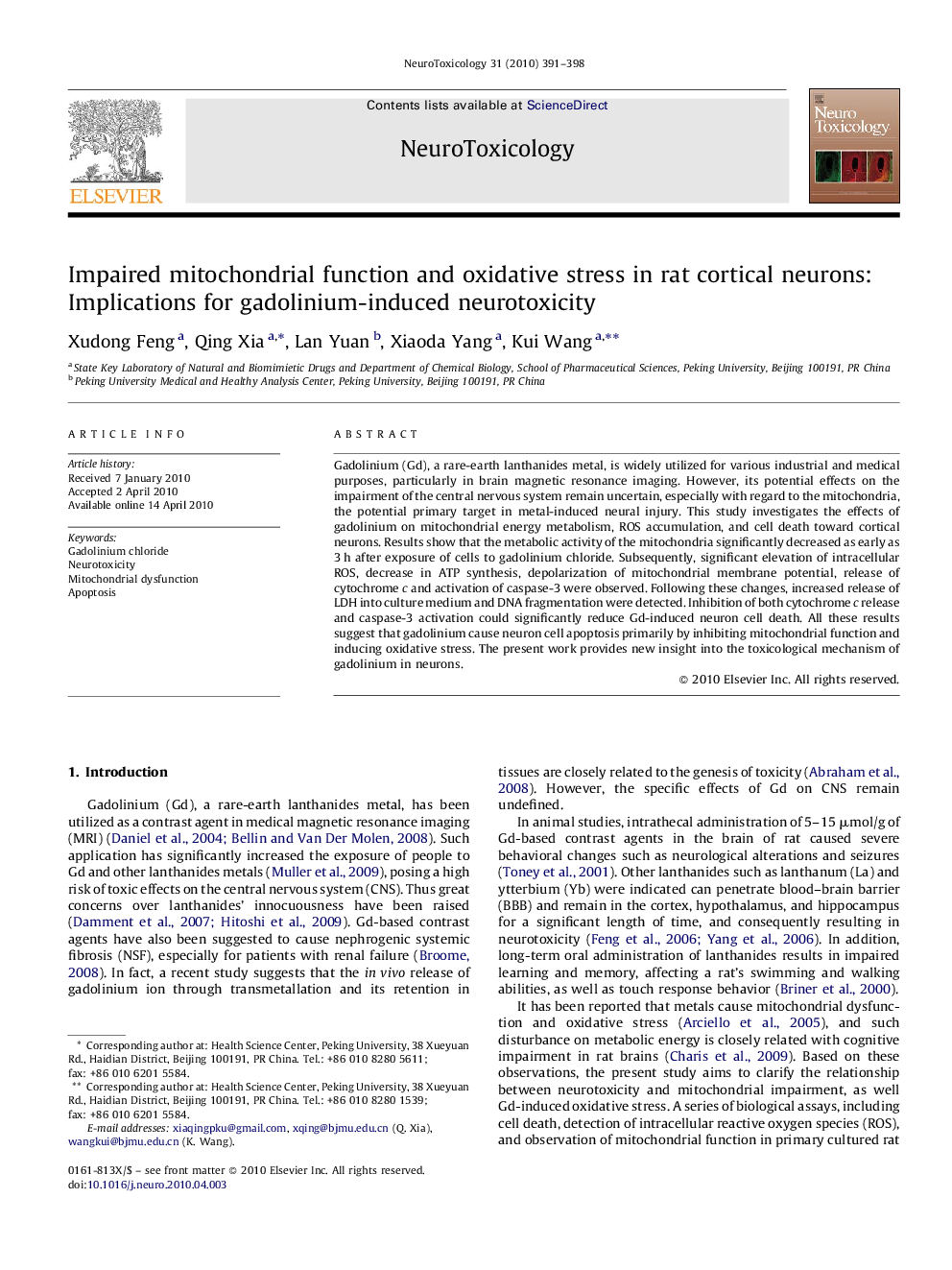| Article ID | Journal | Published Year | Pages | File Type |
|---|---|---|---|---|
| 2589944 | NeuroToxicology | 2010 | 8 Pages |
Gadolinium (Gd), a rare-earth lanthanides metal, is widely utilized for various industrial and medical purposes, particularly in brain magnetic resonance imaging. However, its potential effects on the impairment of the central nervous system remain uncertain, especially with regard to the mitochondria, the potential primary target in metal-induced neural injury. This study investigates the effects of gadolinium on mitochondrial energy metabolism, ROS accumulation, and cell death toward cortical neurons. Results show that the metabolic activity of the mitochondria significantly decreased as early as 3 h after exposure of cells to gadolinium chloride. Subsequently, significant elevation of intracellular ROS, decrease in ATP synthesis, depolarization of mitochondrial membrane potential, release of cytochrome c and activation of caspase-3 were observed. Following these changes, increased release of LDH into culture medium and DNA fragmentation were detected. Inhibition of both cytochrome c release and caspase-3 activation could significantly reduce Gd-induced neuron cell death. All these results suggest that gadolinium cause neuron cell apoptosis primarily by inhibiting mitochondrial function and inducing oxidative stress. The present work provides new insight into the toxicological mechanism of gadolinium in neurons.
